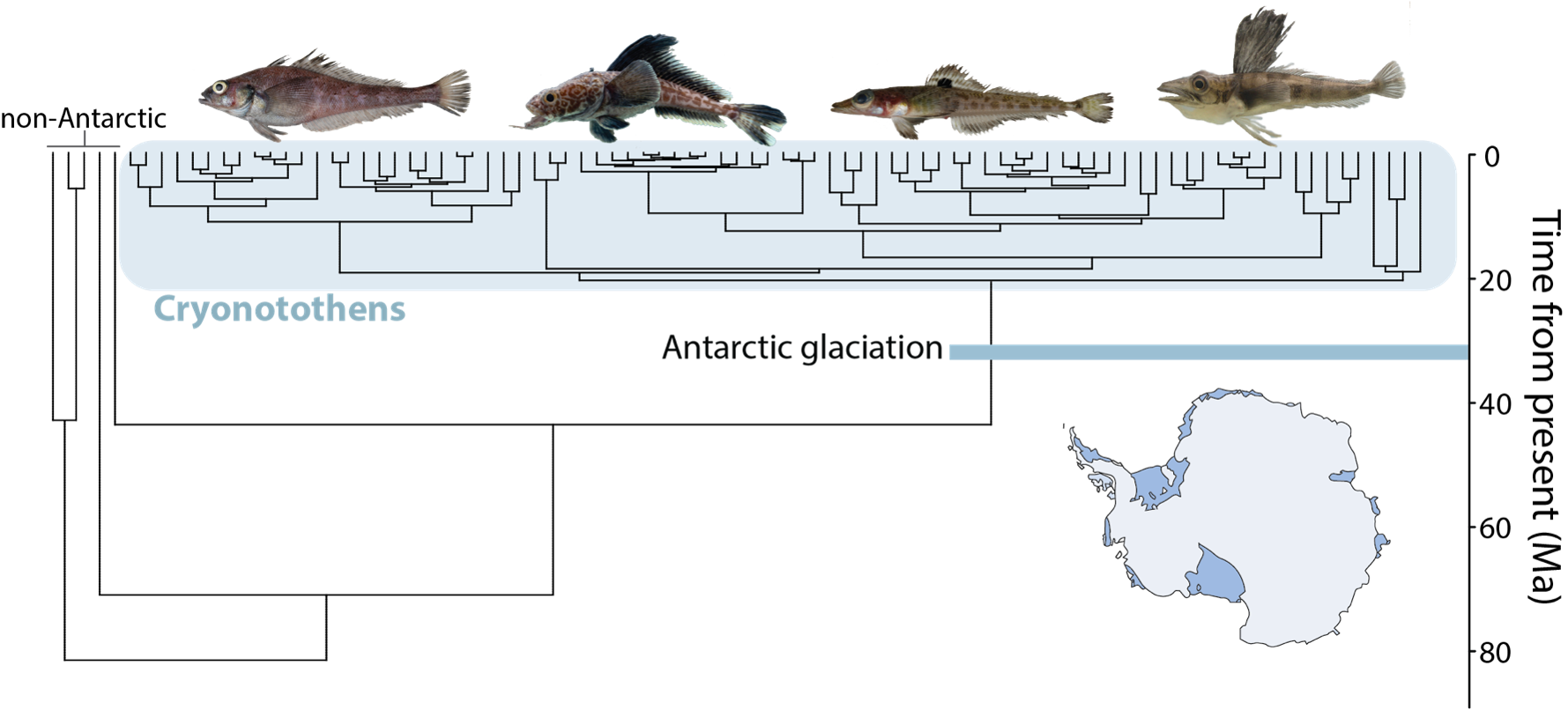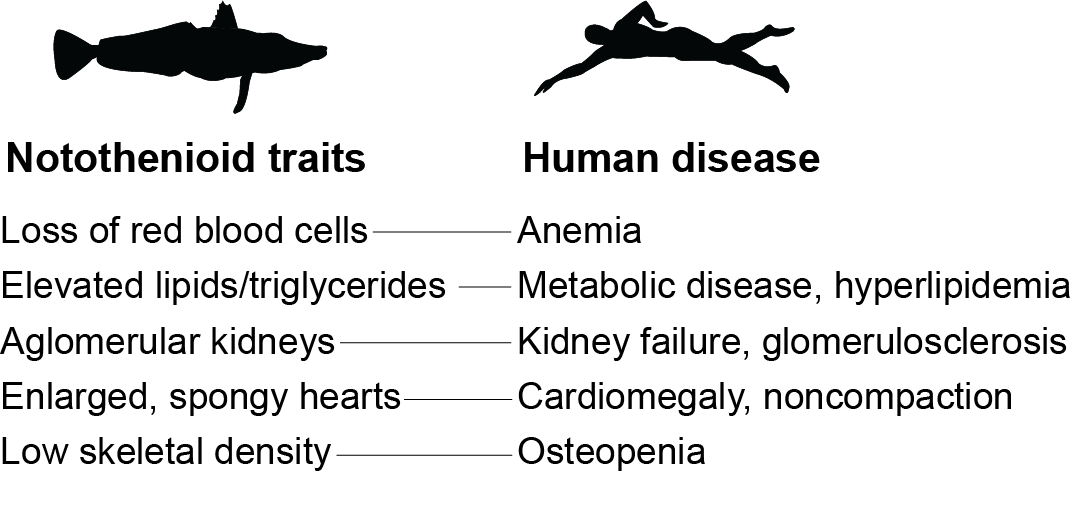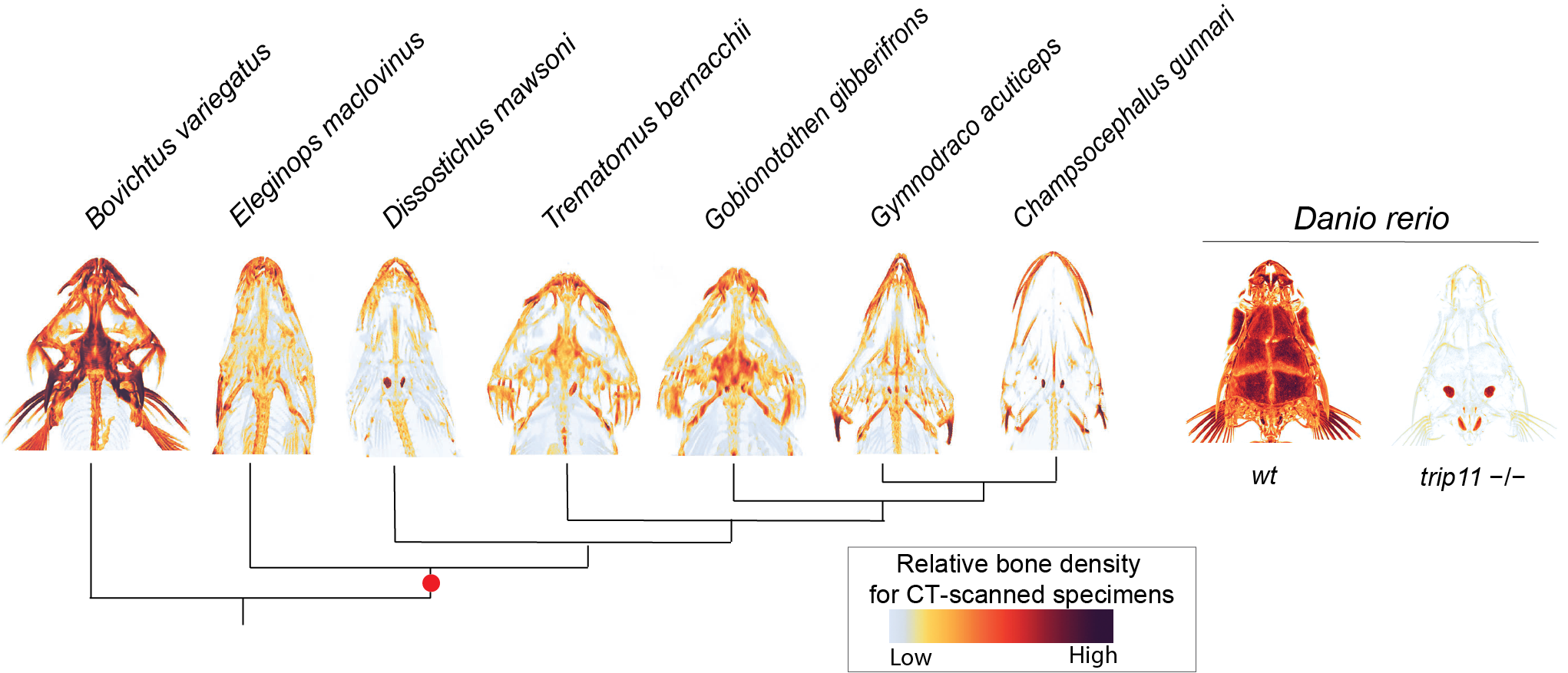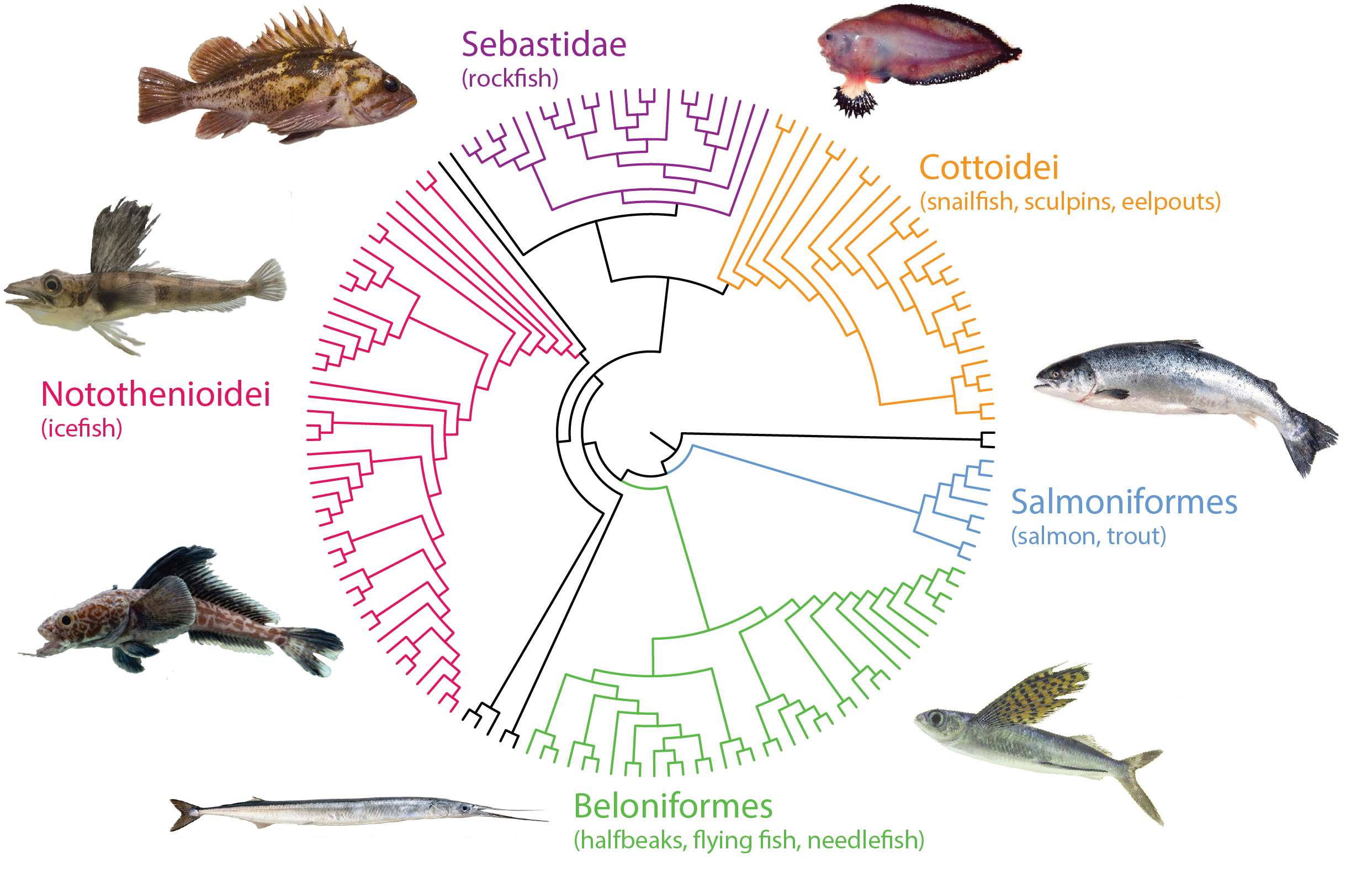Daane lab research
The Daane lab studies the genetic mechanisms by which species adapt to changing and extreme environments, with a broader goal of utilizing this information to elucidate fundamental principles of trait development, adaptive radiation and human disease. We approach these topics through the combined application of comparative genomics and experimental analysis in model organisms.
Genetic basis of adaptation to climate change and extreme environments
How do species adapt to a changing climate? What role does development play in climate adaptation?

As the Earth’s climate is rapidly warming, it is important to understand how species adapt to climate change. Antarctic notothenioid fishes underwent an adaptive radiation following cooling in the Southern Ocean, enabling a retrospective analysis of how species adapt to a changing environment. We are using comparative phylogenomics to reconstruct evolutionary genetic history of the clade and how this interfaces with ancient climate events. We are also using experimental analysis in Antarctic fish embryos to discover and predict the impact of predicted levels of warming on Antarctic fish development, physiology, and genome integrity.
From oceanside to bedside: evolutionary models of human disease
Traits that may be pathological in humans can often be adaptive in the context of other species and environments. Can we utilize this natural variation in specific traits to identify genetic modifiers of human disease and resilience to pathology?

Antarctic fish lineages have evolved numerous traits in the frozen Southern Ocean that resemble pathological conditions in humans. We are working to identify the genetic basis of these traits and to discover how these species overcome the pathological trade-offs associated with these disease-like phenotypes, which could be key in inspiring future treatments for human patients. We model identified genetic loci in the zebrafish to experimentally test hypotheses originating from the comparative genomic analysis and to further elucidate mechanisms for these genes in regulating development and physiology.

Genetic basis of evolvability and origin of key traits during adaptive radiation
Do certain features of the genome pre-dispose lineages to adaptation? Why have certain traits evolved repeatedly while others are seldom observed? Do convergent phenotypes arise from similar molecular mechanisms?

Through deep phylogenomic sequencing of functionally annotated genetic regions from independent adaptive radiations, we are investigating common genetic signatures of adaptive radiation. This includes unraveling the role of introgression, identifying patterns of gene duplication, gene-regulatory evolution, and addressing questions of contingency in evolution.
We have phylogenomic datasets supporting parallel adaptation to extreme environments (polar/deep sea) and repeated evolution of biomedically-relevant traits (low bone density, altered lipid metabolism, loss of kidney glomeruli, etc.). These patterns of convergence can help us to build genotype-phenotype relationships and to uncover broader patterns underlying genome evolution

Current Funding Sources
 NSF OPP-2324998
NSF OPP-2324998
 NSF IOS-2407552
NSF IOS-2407552
 NIH 1R35GM150590-01
NIH 1R35GM150590-01